The purpose of the tire pressure monitoring system (TPMS) in your vehicle is to warn you that at least one or more tires are significantly under-inflated, possibly creating unsafe driving conditions. The TPMS low tire pressure indicator is a yellow symbol that illuminates on the dashboard instrument panel in the shape of a tire cross-section (that resembles a horseshoe) with an exclamation point.
That indicator light in your vehicle has a history. It’s a history rooted in years of uncertainty about proper tire pressure and many serious car accidents that might have been avoided had drivers known their air pressure was low. Even now, it’s estimated that a substantial number of vehicles hit the road each day with underinflated tires. However, proper tire maintenance with the aid of a TPMS can and does help prevent many serious accidents.
Before this indicator light became commonplace, knowing whether your air pressure had reached unsafe levels meant getting out, crouching down, and using a tire gauge. With few exceptions, this was the only pressure-checking tool ordinary consumers had at their disposal.
Then, in response to a surge in accidents due to underinflated tires, the US government passed the Transportation Recall Enhancement, Accountability, and Documentation (TREAD) Act. One of the outcomes of this legislation is that most vehicles sold in the United States since 2007 include a tire pressure monitoring system of some kind.
Not every TPMS works the same way. The illumination of the low tire pressure indicator represents the final step in the process of either an indirect TPMS or a direct TPMS.
An indirect TPMS typically relies on wheel speed sensors that the anti-lock brake system uses. These sensors measure the rate of revolution each wheel is making and can be used by on-board computer systems to compare with each other and to other vehicle operation data such as speed.
Based on the rate of revolution of each wheel, the computer can interpret the relative size of the tires on your vehicle.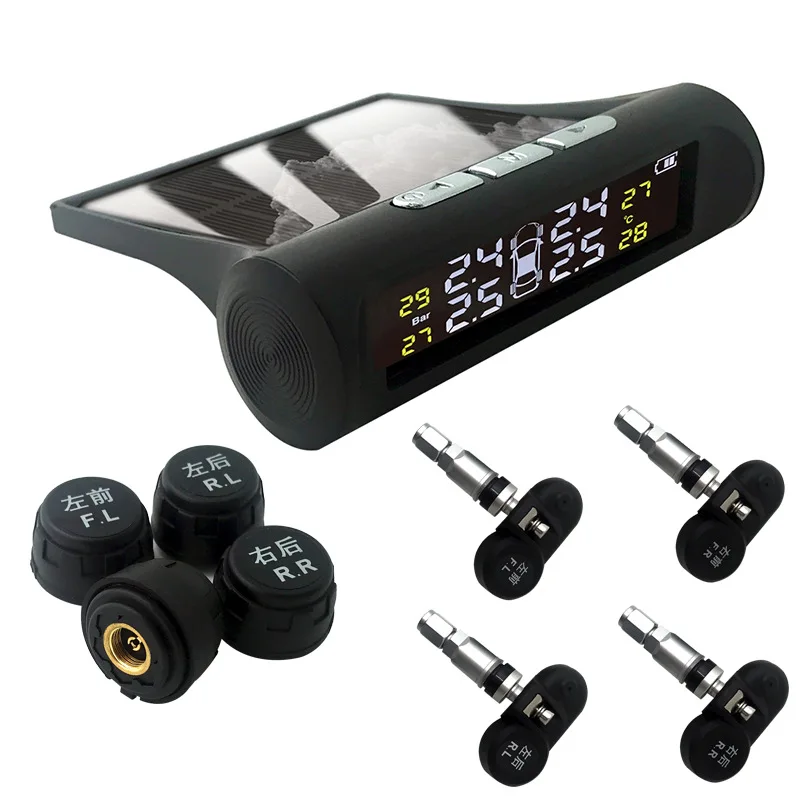 When a wheel starts spinning faster than expected, the computer calculates that the tire is underinflated and alert the driver accordingly.
When a wheel starts spinning faster than expected, the computer calculates that the tire is underinflated and alert the driver accordingly.
So, an indirect tire pressure monitoring system doesn’t actually measure tire pressure. It’s not electronically processing the same kind of measurement you might see with a tire gauge. Instead, an indirect tire pressure monitor simply measures how fast your tires are rotating and sends signals to the computer that will actuate the indicator light when something in the rotation seems amiss.
-- Relatively inexpensive compared to a direct TPMS
-- Requires less programming/maintenance over the years than a direct TPMS
-- Less overall installation maintenance than its direct counterpart
-- May become inaccurate if you purchase a bigger or smaller tire
-- May be unreliable when tires are unevenly worn
-- Must be reset after properly inflating every tire
-- Must be reset after routine tire rotation
Direct TPMS uses pressure monitoring sensors within each tire that monitor specific pressure levels – not just wheel revolution data from the anti-lock brake system.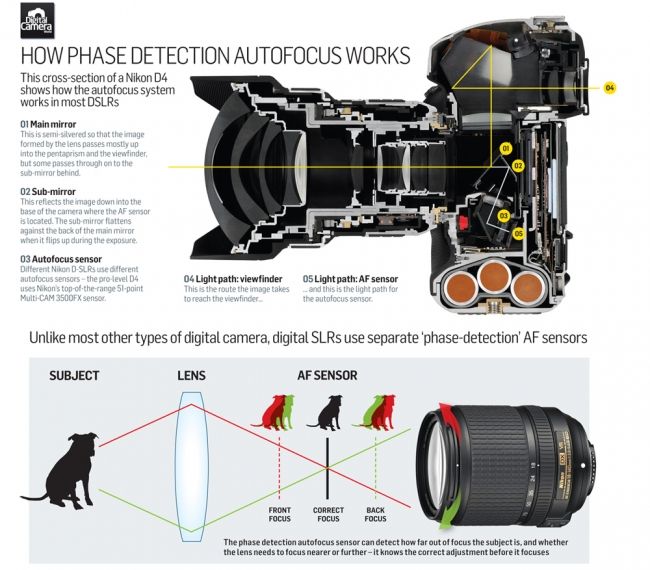
Sensors in a direct TPMS may even provide tire temperature readings. The direct tire pressure monitoring system sends all of this data to a centralized control module where it’s analyzed, interpreted, and, if tire pressure is lower than it should be, transmitted directly to your dashboard where the indicator light illuminates. A direct tire pressure monitor usually sends all of this data wirelessly. Each sensor has a unique serial number. This is how the system not only distinguishes between itself and systems on other vehicles, but also among pressure readings for each individual tire.
Many manufacturers use proprietary technology for these highly specialized systems, so replacing a TPMS in a way that’s consistent and compatible with your vehicle will require an experienced, knowledgeable technician.
-- Deliver actual tire pressure readings from inside the tire
-- Not prone to inaccuracies because of tire rotations or tire replacements
-- Simple resynchronization after tire rotation or tire replacements
-- Batteries inside the sensors usually last for about a decade.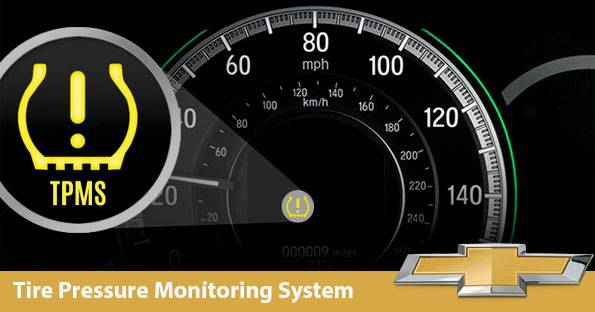
-- May be included in a vehicle’s spare tire
-- More expensive overall than an indirect TPMS
-- Though simple, resynchronization may require costly tools.
-- Battery rarely serviceable; if the battery is drained, the whole sensor must be changed.
-- Proprietary systems make installation, service, and replacement confusing for consumers and auto shops.
-- Sensors are susceptible to damage during mounting/demounting
Although the methods may be different, both systems serve the same purpose and activate the same indicator light. Even though a TPMS can deliver accurate alerts when properly maintained, it’s not a replacement for manual air pressure checks, consider it just another item in your car maintenance toolbox.
There’s never a good time for a flat. That’s why Bridgestone DriveGuard tires are masterfully engineered to keep you moving for up to 50 miles at speeds up to 50 MPH without disruption.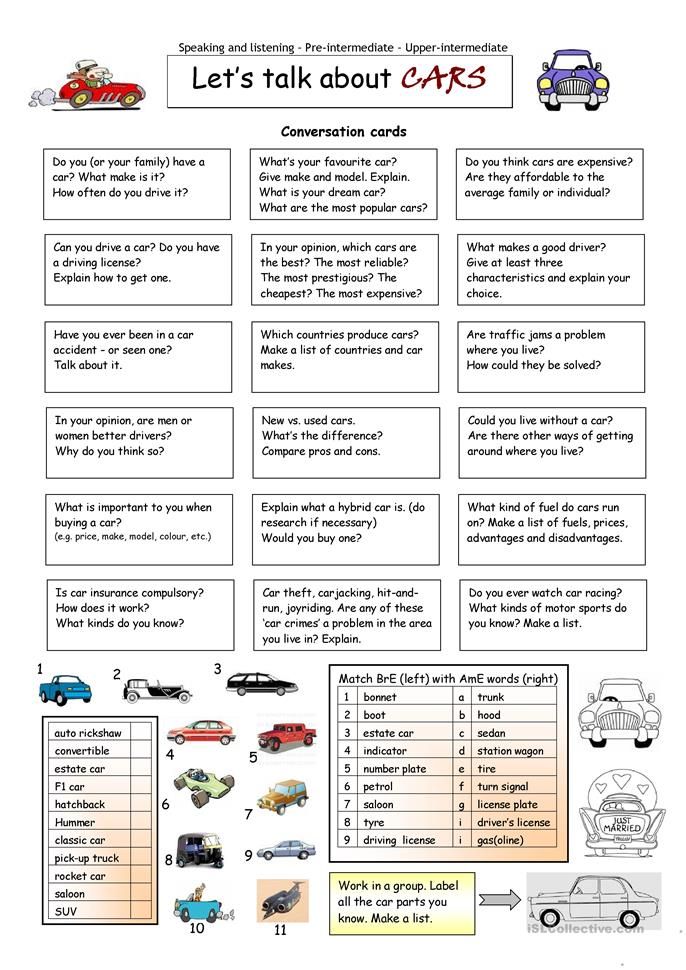
There’s never a good time for a flat. That’s why Bridgestone DriveGuard tires are masterfully engineered to keep you moving for up to 50 miles at speeds up to 50 MPH without disruption.
See Details Find Your Fit
Why are tire pressure monitoring systems so relevant in modern cars? Do they have a function or are they just an added expense to vehicle owners? Are the TPMS units located in the tires or on the wheel?
We will try to answer these and some additional questions in today's blog post.
A tire pressure monitoring system (TPMS) is a system in your car that alerts the driver when the air pressure drops inside the tire. This is an electronic system that connects the sensor (placed on the rim) with the monitor (on the vehicle's dashboard) in order to show whether the tires are properly inflated or not.
When air pressure loss occurs in the tire, the TPMS will notify the driver with a flat tire warning light. This means the tire is not at its proper inflation for some reason - which may be due to tire or valve damage, but either way, the tire needs to be reinflated and repaired.
These sensors ensure the tires do not reach dangerous levels of deflation, which can further damage the tire, the rim, and even the TMPS unit if one is not careful. For this reason, they have become a mandatory part of vehicle manufacturing in the US since 2008.
Tires that are not inflated correctly will have accelerated tread wear, shortening their service life. The lower inflation widens their footprint, compromising their driving safety and causing more pressure build-up during their performance - which will ruin their fuel economy. Additionally, the wider footprint will ruin the tires' wet weather performance, while also increasing the braking distance. In other words, it will ruin the vehicle's performance and driving safety.
There are two different types of tire pressure monitoring systems available on the market. Generally speaking, their purpose is the same, but the way they operate is completely different.
The two types are:
Direct TPMS systems are the most common. This type uses sensors mounted onto the rims, inside the tire, to measure the inflation of each tire separately. When the air pressure in a tire drops below 25% from the recommended inflation level, the sensor notifies the computer system of the vehicle and the low-pressure warning light on the dashboard turns on.
Direct TPMS systems consist of 5 main parts: the 4 sensors mounted onto the wheel of each tire (usually near the valve stems) and the indicator in the vehicle's computer system. Therefore, when it is time for the vehicle's maintenance, replacing a direct TMPS system will be a bit more costly.
There are two types of direct TPMS systems:
High line TPMS systems are fitted with low-frequency transmitters near the wheels, which are used by the vehicle to force the transmission between the sensor and the computer system. These types of sensors are not turned on and do not transmit constantly. Instead, the vehicle will regularly ask for information regarding the tire pressure levels from the sensors when the ignition is turned on and repeatedly during the drive.
The high line system activates the transmitters one after the other, which will help later determine which sensor has sent the low tire pressure warning. The sensors can be located based on their unique ID, which will show the position of the sensor. This system type offers the advantage of not draining the vehicle's battery.
Low line TPMS systems use the units mounted on the wheels to transmit the tire's air pressure levels on fixed or random intervals.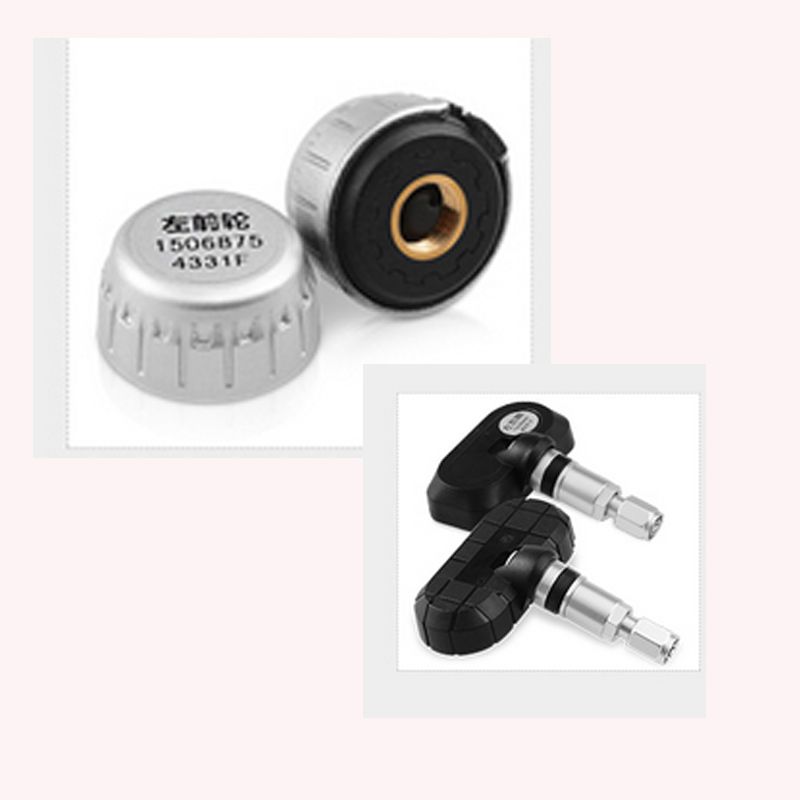 However, as the sensors of the tires are not connected, they may transmit simultaneously. This can lead to the collision of the pressure messages, and measures must be taken for the vehicle to be able to correctly receive them. To combat the collision of the messages, one TMPS system can send the same message multiple times.
However, as the sensors of the tires are not connected, they may transmit simultaneously. This can lead to the collision of the pressure messages, and measures must be taken for the vehicle to be able to correctly receive them. To combat the collision of the messages, one TMPS system can send the same message multiple times.
Some low line systems make sure the TMPS units transmit more often and send more frequent transmissions when sudden change or high temperatures are detected. In this manner, the sensors make sure the vehicle receives the transmission. Most vehicles are equipped with this type of direct TMPS as it is less costly.
Indirect TMPS systems work with the vehicle's Antilock Braking System. The ABS monitors the wheel speed and it helps out the indirect TPMS system as well. When the tire pressure drops in the tire, it will roll at a varied wheel speed, compared to the other tires. The computer system notices this and makes the low-pressure light come on.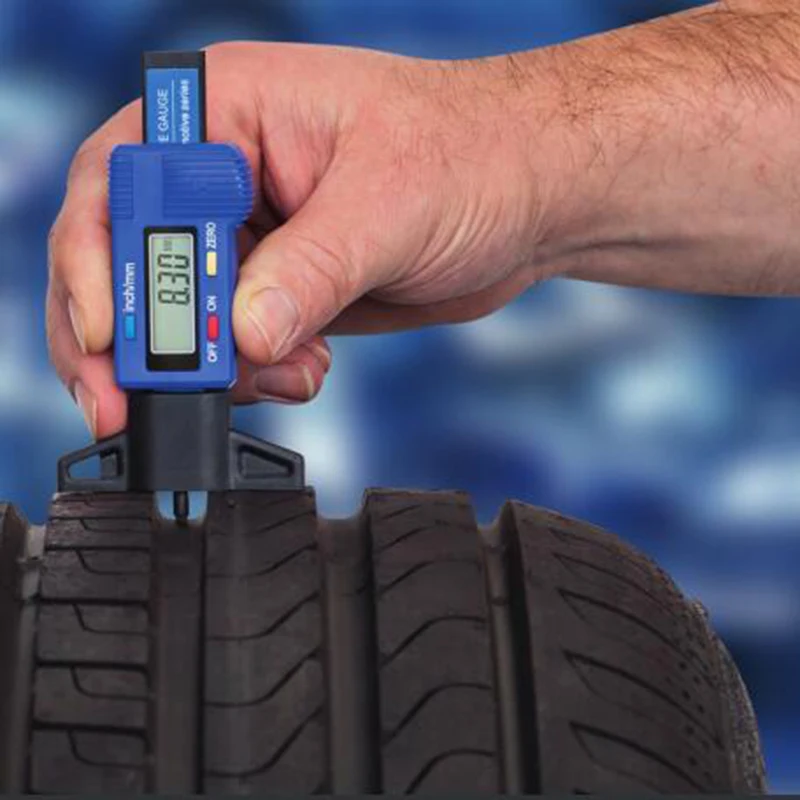
The Indirect TMPS system does not need additional components to be mounted on the wheels as it works with the ABS monitor. As a result, when the system needs to be replaced, additional labor costs and parts will not need to be paid for.
The main difference between the direct and indirect tire pressure monitoring system types is the manner in which they measure whether the tires are correctly inflated or not. But which TPMS type is the better one?
For everyday vehicles' and customer needs, the direct TPMS system seems to work better. This is due to the nitpicky control of indirect TPMS systems, which need to be recalibrated each time the pressure in the tires is changed or when the tires are replaced. As a result, such systems give too much control to the vehicle's owner, which is probably not a good idea with critical safety functions.
Furthermore, the biggest issue with indirect TPMS systems is that it only turns on the low tire pressure light when one tire has different pressure levels from the rest.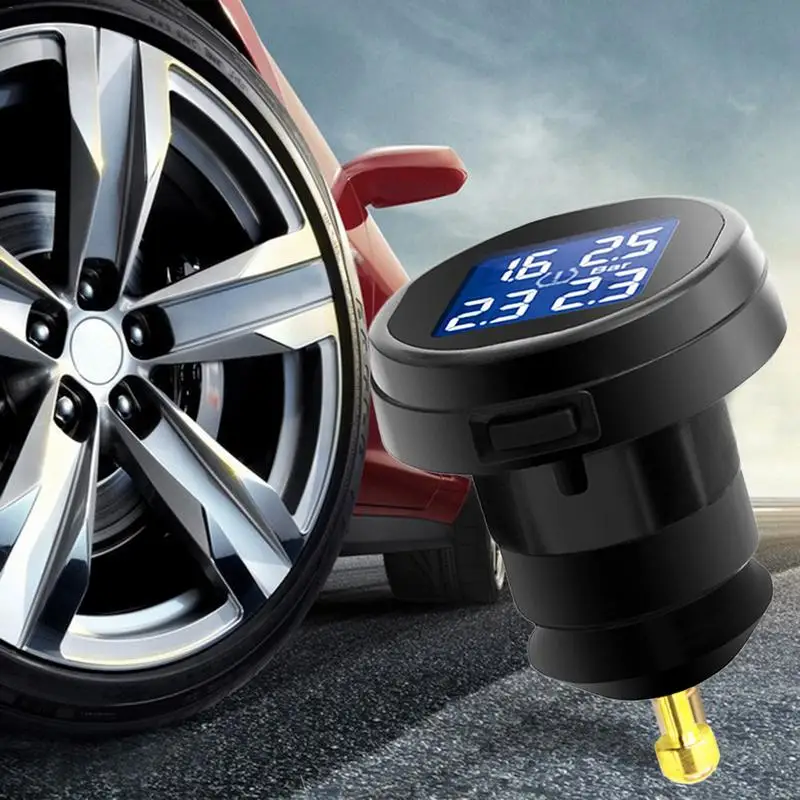 However, when all four tires are deflated to a certain degree and function in that manner, the indirect TPMS will not notify the driver. This is still classified as low inflation pressure and it will cause an issue in the long run, but the indirect TPMS system will not notice it.
However, when all four tires are deflated to a certain degree and function in that manner, the indirect TPMS will not notify the driver. This is still classified as low inflation pressure and it will cause an issue in the long run, but the indirect TPMS system will not notice it.
Under-inflated tires result in a shortened service life, a longer braking distance, a ruined fuel economy, and weaker traction. Therefore, direct TMPS sensors are more reliable for the average driver and they will result in fewer headaches during the vehicle's performance.
The benefits of a tire pressure monitoring system (TPMS) are the exact opposite of what under-inflated tires cause. When the tire pressure is monitored in the tires, it gives the driver control over the vehicle and ensures that it can perform in the correct manner. A tire pressure monitoring system will allow the driver to notice incorrectly inflated tires, and to prevent any possible problems when the low pressure light comes on.
Proper tire pressure inflations optimize the tire's surface contact throughout its performance. In this manner, they optimize the tire's traction, ensure a shortened braking distance, improve the fuel economy and ensure a slower and even wear along the tread area.
Therefore, when the TMPS system receives regular maintenance and performs in the proper manner, it will ensure the vehicle's optimal performance.
When the tire pressure monitoring system (TPMS) needs to be replaced depends on its type. The main reason for the TPMS' replacement is damage, corrosion, and run-down batteries.
The location of the tire pressure sensors on the wheels makes them face a higher possibility of damage during the vehicle's everyday performance. This damage can be caused by a flat tire, potholes, or accidents, which do not necessarily just harm the sensors but can create bigger issues as well.
Corrosion is usually the result of the road salt used in winter weather conditions. If the tires do not use snap-in, rubber valve stem TPMS sensors, the system faces a higher chance of corrosion and excessive rusting. Road salt can easily harm the rest of the vehicle as well.
If the tires do not use snap-in, rubber valve stem TPMS sensors, the system faces a higher chance of corrosion and excessive rusting. Road salt can easily harm the rest of the vehicle as well.
TMPS sensors, like most electronic devices, run on battery life. While they utilize a battery-saving operating method, their lifespan is still limited. Generally, sensors can run for 5-10 years, depending on what type you decide to get. If you notice that the sensors are nearing the end of their battery life, it will be more cost-efficient to change them when replacing the tires - it will save you on the labor cost!
Still, regular checkups and maintenance of the tire pressure monitoring system are recommended for safety. It will allow the tire pressure sensors and the low pressure light to function in the necessary manner, without having to result in emergency fixes when the system breaks down, due to any of the before mentioned reasons.
Unfortunately, the TMPS sensor of tires cannot be repaired.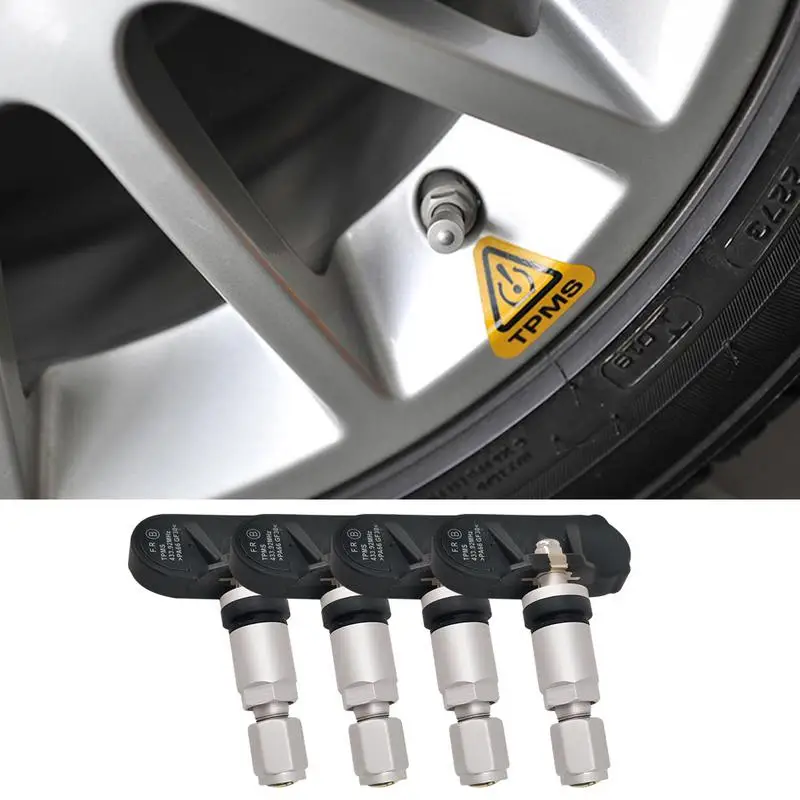 When a TMPS unit goes bad for any reason, either the entire system or the bad unit will need replacing.
When a TMPS unit goes bad for any reason, either the entire system or the bad unit will need replacing.
Yes, the United Stated Congress legislated the TREAD Act, which requires all light motor vehicles to be equipped with a proper TPMS sensor. As of 2008, all new passenger vehicles must have a TPMS sensor installed. For trucks and vans, a TMPS sensor is not mandatory.
Can you drive with a broken TPMS sensor?The vehicle can be driven when the TPMS sensor is broken, but it is recommended to have it fixed as soon as possible. If the TMPS sensor is not doing its job correctly, you will not know when the tires lose air pressure. This can lead to damage to the tire, the rim, and the vehicle if you are not careful.
To replace a TPMS sensor, will typically cost you between $220 and $240. The price to replace the parts needed for the TMPs is around $170 and you will need to add the labor cost, which is usually between $50 to $70 depending on where you take your vehicle.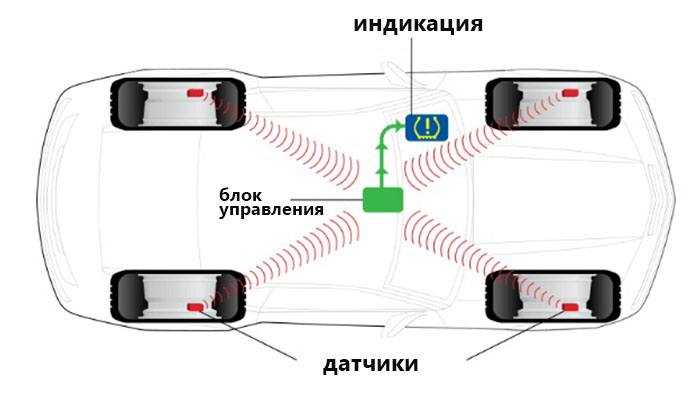
When the tire pressure monitoring light turns on, it means the tire or tires have lost air pressure. In such instances, the tire pressure runs lower than what is recommended and it needs to be fixed to ensure the vehicle's performing security.
In America and Europe, a tire pressure monitoring system is an indispensable element of a car. Most likely, in the near future the same rules will be adopted in Russia.
But even if this system does not become mandatory, nothing prevents it from being installed in a car if the standard TPMS is not provided by the manufacturer: it is much better to find out in time that the wheel is flat than to wait for sad consequences. nine0003
TPMS (tire pressure monitoring system) monitors changes in tire pressure: even a small decrease in pressure in one wheel increases fuel consumption, worsens car handling and increases tread wear.
Now the pressure control system is divided into systems of direct (direct) and indirect (indirect) directions - we will tell you in more detail what it is.
In direct measurement systems, sensors are placed on the valves of all wheels. They can be installed inside or outside. The sensor detects the level of pressure in the wheel and transmits information via radio to the control unit. Here, the accuracy of the readings plays a big role - you can even track a decrease in pressure by only 0.1 bar.
The "direct" system is more expensive than the "indirect" one, but it transmits information more accurately and faster. She, of course, has her own nuances: if you have to swap tires for even wear, then information about this will need to be entered into the control unit. nine0003
The so-called "indirect" TPMS is essentially a software extension for ABS: in its work it uses standard wheel rotation sensors.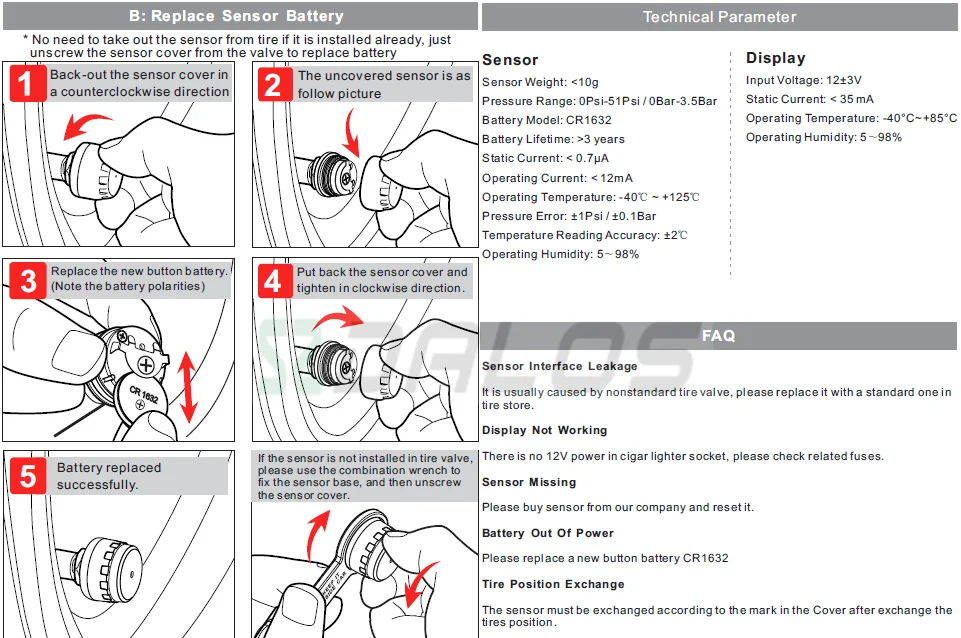 The system monitors changes in wheel speed and can diagnose tire pressure loss based on this information.
The system monitors changes in wheel speed and can diagnose tire pressure loss based on this information.
In this case, we are not talking about exact values, but only signals a significant deviation from the usual pressure - a significant deviation in this case is 0.3 bar, and a dangerous one - 0.5 bar. nine0003
"Indirect" systems may erroneously transmit a signal for a decrease in tire pressure also when:
Uneven load distribution
Frequent change from lane to lane
slippage
Sharp descents and ascents
But this can be adjusted, for example, by setting an alert delay. You can also reboot the system so that it adjusts to different tire pressures at startup.
The AIRLINE range includes 2 models of the "direct" system.
Tire pressure monitoring system TPMS BLACK ATP-MS-01 includes 4 sensors and a receiving module with a color LCD display.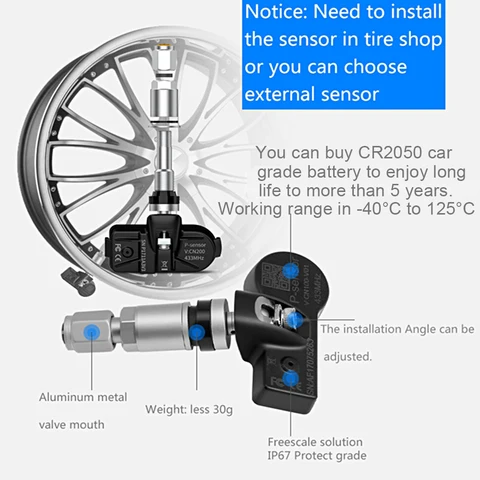 The sensors are mounted on the nipple of the car wheel, measure the pressure and air temperature in the tire and transmit information about the pressure value via radio to the display. When the tire pressure changes, the system transmits information with sound signals and displays it on the display. The pressure and temperature thresholds are set in the display menu. The system can be installed independently - it does not require special skills. nine0003
The sensors are mounted on the nipple of the car wheel, measure the pressure and air temperature in the tire and transmit information about the pressure value via radio to the display. When the tire pressure changes, the system transmits information with sound signals and displays it on the display. The pressure and temperature thresholds are set in the display menu. The system can be installed independently - it does not require special skills. nine0003
The receiving module is powered by the car's cigarette lighter socket, there is also a USB output for convenient parallel charging of the smartphone. The kit includes a receiver with a display, 4 external pressure sensors, 4 locknuts, a kit for mounting sensors, a warranty card and instructions. The operating temperature of the sensors is from -40°С to +125°С.
Tire pressure monitoring system TPMS wireless INSIDER SOLYAR ATP-MS-02 includes 4 sensors and a receiving module with a color LCD display.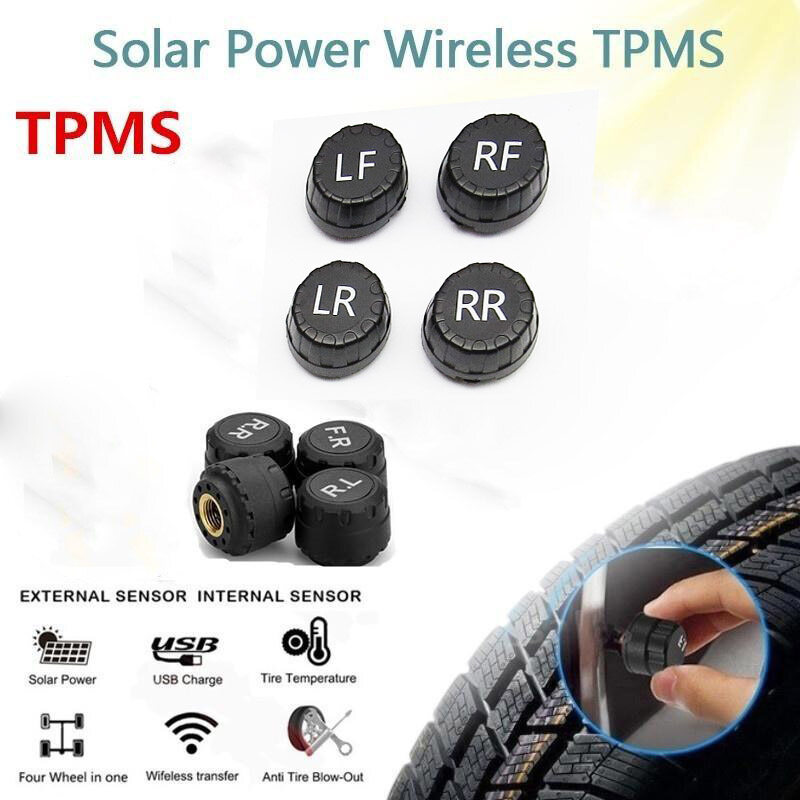 When the tire pressure changes, the system transmits information with sound signals and displays it on the display. The sensors are marked position, but the wheels can be swapped, everything is reconfigured. The operating temperature of the sensors is from -40°С to +125°С. nine0003
When the tire pressure changes, the system transmits information with sound signals and displays it on the display. The sensors are marked position, but the wheels can be swapped, everything is reconfigured. The operating temperature of the sensors is from -40°С to +125°С. nine0003
The kit includes a double-sided adhesive tape for fixing the receiving module on the dashboard of the car, it can also be mounted on a Velcro mat.
The receiver module is powered by a built-in lithium-polymer battery, which is charged by a built-in solar panel or a microUSB socket. The kit includes a receiver with a display, internal sensors, a USB-microUSB cable, double-sided tape, a warranty card and instructions. Tire fitting is required for installation, so we recommend contacting a service center for proper installation. nine0003
Today, there are several varieties of systems with tire pressure monitoring sensors.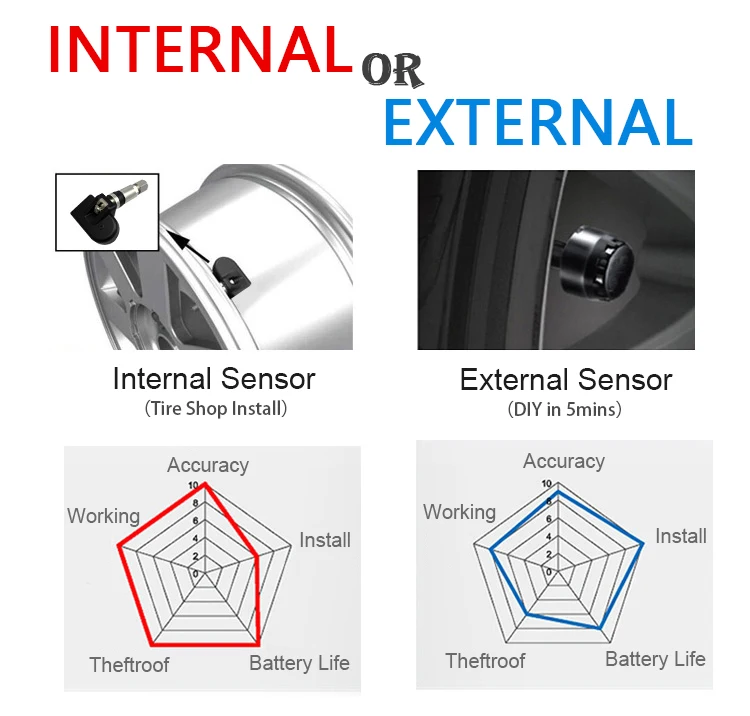 Accordingly, the principle of their work differs significantly from each other. There are regular systems of so-called indirect and direct pressure control. Freelance systems are also sold, which are distinguished by information content and, in fact, by the sensors themselves. There are also just sensors, without any system. We offer a closer look at these technologies, the principle of operation of different tire pressure sensors, their varieties, advantages and disadvantages. nine0003
Accordingly, the principle of their work differs significantly from each other. There are regular systems of so-called indirect and direct pressure control. Freelance systems are also sold, which are distinguished by information content and, in fact, by the sensors themselves. There are also just sensors, without any system. We offer a closer look at these technologies, the principle of operation of different tire pressure sensors, their varieties, advantages and disadvantages. nine0003
OEM tire pressure monitoring systems include equipment that is installed in modern cars both in the basic configuration and as an additionally paid option. Conventionally, they are all divided into two types:
Let's briefly consider them separately.
Absolutely all standard tire pressure monitoring systems are abbreviated as TPMS - Tires Pressure Monitoring System. So, the equipment of the so-called indirect tire pressure control does not measure any pressure at all. Her work is tied to the ABS system, or rather, to sensors that read wheel speed.
This data is then sent to the control unit, which compares the wheel speed with the actual distance traveled by the vehicle in time intervals. When the tire pressure decreases, the physical diameter of the wheel decreases accordingly. As a result, to overcome the same distance, he has to make more revolutions. This discrepancy fixes TPMS, signaling an emergency situation for the driver. nine0003
The main advantage of this type of system is mechanical reliability. Due to the fact that there are no sensors in the rotating and under adverse conditions, the risk of failures and errors is reduced. In addition, the equipment for installing such systems costs a little less than that with tire pressure sensors.
However, this simplicity has some drawbacks. This is mainly about accuracy and information content. Such systems do not display any information about the current tire pressure, but only signal when the tire is flat by more than 30-40%. nine0003
These systems are much more informative and sometimes even very accurate. They consist of a control and signaling unit, as well as four sensors that are installed directly in each wheel. As a rule, instead of conventional inserts with spools.
Each sensor is a small unit containing a transmitter module, power supply and reader. The transmitter module transmits information to the central control unit using short pulse signals with an average frequency of once per minute. This allows you to use the energy of the power source as economically as possible, since due to the internal location of the sensor, its replacement is not provided at all. nine0003
The reader is usually a special element that changes its electrical resistance depending on the tire pressure.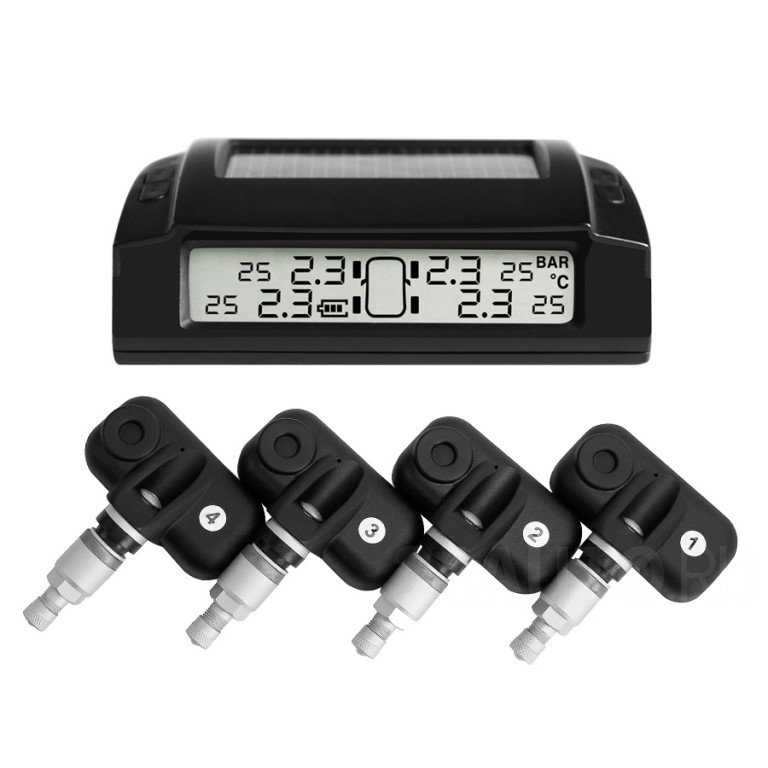 They come in two types - the more common piezoelectric elements, and less common strain gauges. The principle of operation of such pressure sensors is approximately the same.
They come in two types - the more common piezoelectric elements, and less common strain gauges. The principle of operation of such pressure sensors is approximately the same.
The advantages of such a system are accuracy and relative reliability. Many models "can" not only signal in case of emergency situations, but also show quite visual numbers informing the driver about the current air pressure in each of the wheels. Reliability is ensured due to the fact that the sensors themselves are located inside the wheel, and there, as a rule, it is dry, clean and “comfortable” for electronics. nine0003
The most vulnerable point of such systems is the receiving devices, which are located as close as possible to the sensors. This is done so that the distance that the signal from the sensors travels is minimal. This minimizes the energy consumption of the built-in power supplies, and also reduces the risk of picking up various interferences from electronic devices operating at the same frequencies (from the same TPMS in passing cars). Because of this, the receiving devices are located somewhere under the wheel arches or on the bottom of the car. And for electronics, these are not the most “comfortable” places. nine0003
Because of this, the receiving devices are located somewhere under the wheel arches or on the bottom of the car. And for electronics, these are not the most “comfortable” places. nine0003
Such devices can be bought in specialized stores and adapted to any car that is equipped with classic tubeless tires. There are several types, the main ones are briefly discussed below.
Kit includes a central signaling unit and four sensors for installation in tires. In the most primitive version, the main unit has four LED indicators that simply light up when the pressure in one of the wheels is out of range. As a rule, due to the design of the sensors themselves, such systems work only to reduce pressure. nine0003
Sensors of such systems are of two main types - external and internal. External ones are installed on the wheels instead of regular caps. They are designed in such a way that when screwing in, the spool valve is pressed in, and the sensor reading element is constantly affected by the actual tire pressure. Sensors work on batteries, which can be replaced if necessary. Internal sensors are installed on the inner surface of the disk instead of the standard spool, or independently of it. The principle of operation is similar - the device responds to changes in tire pressure and transmits the appropriate signals to the central unit. nine0003
Sensors work on batteries, which can be replaced if necessary. Internal sensors are installed on the inner surface of the disk instead of the standard spool, or independently of it. The principle of operation is similar - the device responds to changes in tire pressure and transmits the appropriate signals to the central unit. nine0003
These are more advanced devices that are equipped with a central unit with a liquid crystal display. It displays not only the alarm, but also the digital pressure values in all wheels. The accuracy of the readings displayed on the display depends on the class of the device, that is, roughly speaking, on its cost.
Sensors are responsible for “measuring” pressure, which are screwed on instead of standard caps.
Absolutely similar to the previous system, but here the sensors must be mounted inside the wheel. As a rule, such devices are more expensive than those with external sensors.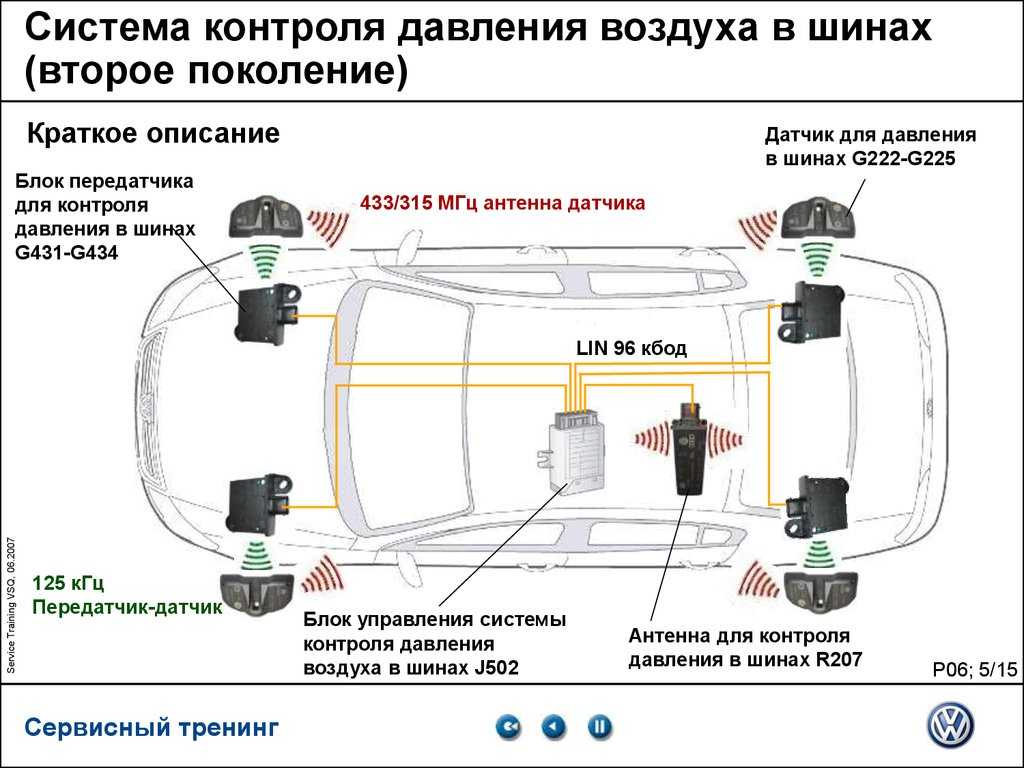 However, they have several advantages at once. First, such sensors cannot be stolen. Secondly, they work in dryness and cleanliness, which for obvious reasons increases their service life, reliability and accuracy of readings.
However, they have several advantages at once. First, such sensors cannot be stolen. Secondly, they work in dryness and cleanliness, which for obvious reasons increases their service life, reliability and accuracy of readings.
By and large, these devices do not represent any practical value, but due to their extremely attractive cost, they are very popular today. The package includes four sensors without any electronics and batteries. The principle of their operation is based on a mechanical change in the position of the color indicator depending on the pressure in the tires.
In practice, the user, who has installed such tire pressure sensors, is able to quickly assess, without a pressure gauge, how approximately the tire is inflated or deflated. And so roughly that no less accurate information can be obtained without any sensors, just by looking at the bottom of the tire. nine0003
Naturally, almost all of the benefits described below can only be obtained when the car is equipped with either a standard or an expensive external pressure monitoring system.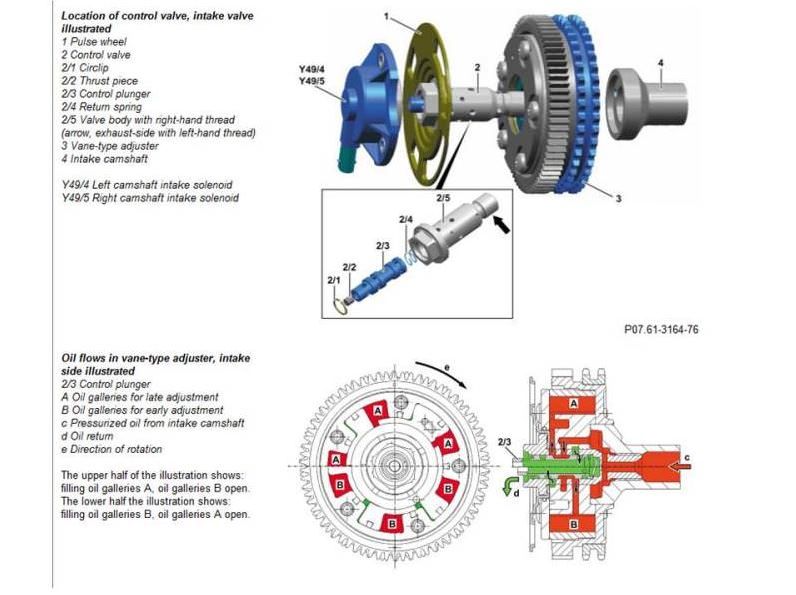 From Chinese cheap sensors and other "collective farm" there is not much sense. So just play around and throw it away.
From Chinese cheap sensors and other "collective farm" there is not much sense. So just play around and throw it away.
So, if the TPMS system is functioning normally, then it informs the driver in a timely manner about the current pressure in the wheels. The benefits of this information are as follows:
Safety is ensured by the fact that the system automatically "forces" the driver to stop and not continue driving on wheels with the wrong pressure. At the same time, it is considered dangerous to drive both on flat tires and on pumped ones. In the first case, the controllability and maneuverability of the car are reduced, since even one incompletely deflated wheel will turn the control into “cotton”, that is, poorly responsive to steering wheel turns. When the pressure in the wheels exceeds the norm, the contact patch of rubber with the road surface decreases. Because of this, the braking distance is significantly increased, and the risk of the car entering an uncontrolled skid increases.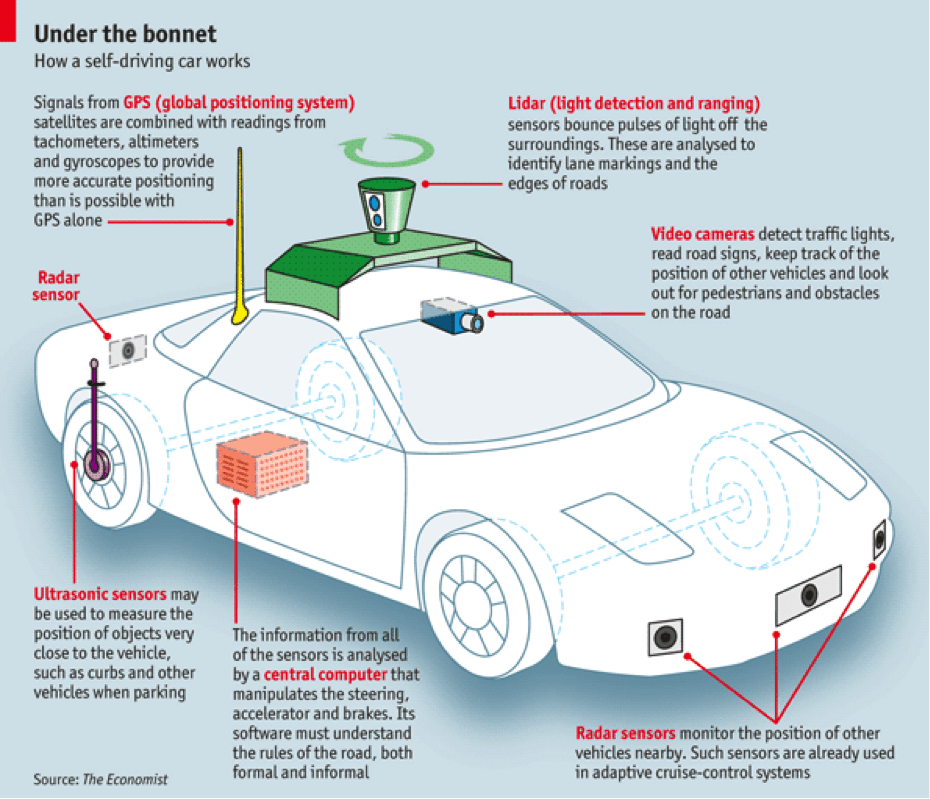 nine0003
nine0003
If everything is clear with a suddenly flat tire, then with an increase in pressure, many may have a question - where can it come from? And the thing is that tires must be pumped up correctly, taking into account the fact that, depending on the speed of movement and ambient temperature, the pressure in them can increase noticeably. This happens in the heat and during long-term movement at speeds over 100 km / h. In such conditions, not only the tires are heated, but also the air in them. And when a substance is heated, as is known, it expands in volume, which leads to an increase in pressure. nine0003
As for fuel consumption, it is the greater, the lower the pressure in the wheels. The engine starts to “eat” more because it is harder for it to push the car on low tires, the rolling resistance of which increases with decreasing pressure in them. At the same time, lowering the pressure in the wheels by only 0.1 atmosphere during long trips can increase the fuel budget very noticeably.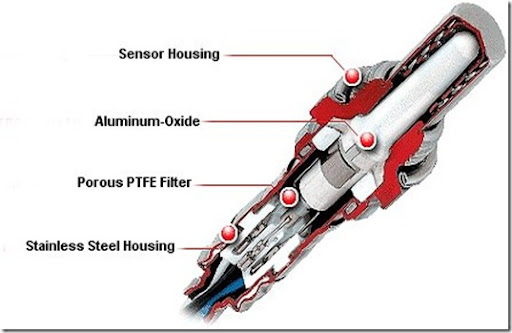
Tire resource. In this regard, both high and low tire pressure are bad. An overinflated tire, as mentioned above, has a smaller contact patch with the road surface. As a result, the load on this very spot increases, and it wears out intensively around the entire circumference of the tire. The first sign that you've been riding on overinflated tires is abnormally worn rubber along the center tread line. With insufficient pressure, the load increases on the edges of the tread, the wear of which can be seen in the form of a corresponding uneven wear. nine0003
It is also worth noting that in almost all EU countries today it is forbidden to operate a car without a tire pressure monitoring system. So its presence on your car model provides another advantage - the ability to simplify registration when traveling abroad, at least for this item.
Despite the fact that the first even slightly working tire pressure monitoring systems appeared in the late 90s, the development of technology has not made them reliable and trouble-free. From many owners of cars with standard TPMS systems, only one can hear - it is buggy, then the indicator lights up for no reason, then it stops working altogether. The reason for all this is the same - the difficult conditions in which this system operates. nine0003
From many owners of cars with standard TPMS systems, only one can hear - it is buggy, then the indicator lights up for no reason, then it stops working altogether. The reason for all this is the same - the difficult conditions in which this system operates. nine0003
Along with the extreme unreliability of tire pressure sensors, the following disadvantages can also be noted:
 Such wheels, even at zero pressure, decrease in diameter slightly. So insignificantly that the system may not notice anything in which case.
Such wheels, even at zero pressure, decrease in diameter slightly. So insignificantly that the system may not notice anything in which case. However, not always all these shortcomings "gather together".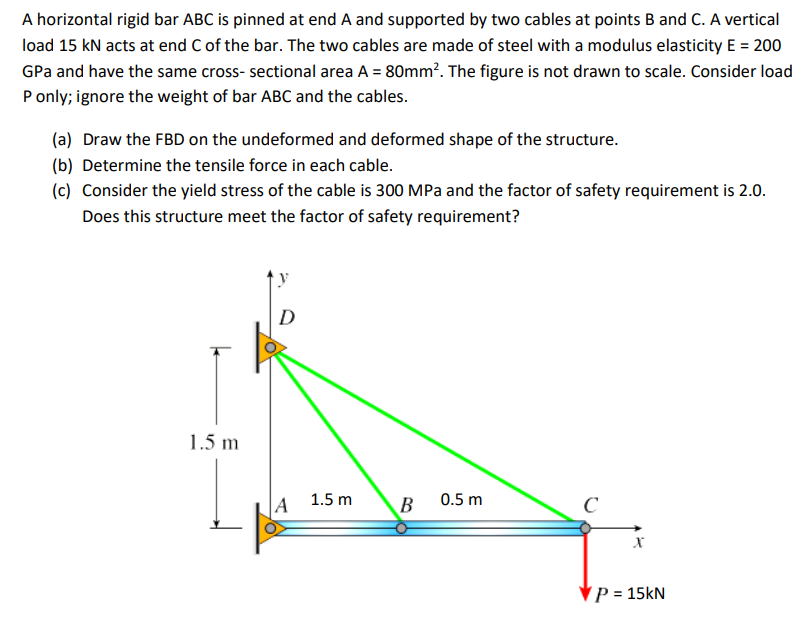 In cars where TPMS is a standard system, and the manufacturer embeds it not as an option, but already in the base, and not for the first time on this model, then everything works relatively reliably and for a long time.
In cars where TPMS is a standard system, and the manufacturer embeds it not as an option, but already in the base, and not for the first time on this model, then everything works relatively reliably and for a long time.
Summary
The tire pressure monitoring system is nothing new or innovative. The first sensors were installed in cars twenty years ago. However, despite this, to date, such systems are not distinguished by reliability and durability. Especially in harsh operating conditions on our roads and in our climate. Reliability and durability here directly depends on the cost of the system. Therefore, if you really need it, forget about cheap Chinese sensors and other “toys” that cost less than $100. They don't work as they say in their description. nine0003
Related Material
5 Possible Causes of a Car Battery Draining Quickly
Bad Starter Turns: Troubleshooting and Troubleshooting
Easy Ways to Check High Voltage Ignition Wires
Why You Need to Change Your Car’s Shock Absorbers
5 Ways to Check Your Car’s Shock Absorbers 5 WaysVibration when braking a car: self-diagnosis
Operating rules and washing the car after painting the body
The battery is boiling: causes and myths
Voltage drops in VAZ and other cars
Preparing the car for sale
How to better set up the radio in the car
10 possible reasons why the speakers wheeze in the car
Tips on how to reduce fuel consumption on the car
How to properly connect any car radio to anything
How to repair the radio with your own hands
In the battery, one “can” does not boil when charging
Uneven tire wear
Is it possible to charge the battery without removing the terminals - myths and reality
How to make 220 volts in a car
Why does the car stall when the terminal is removed from the battery and is it possible to do this
Should I disconnect the battery? 10 cases when it really does not hurt.